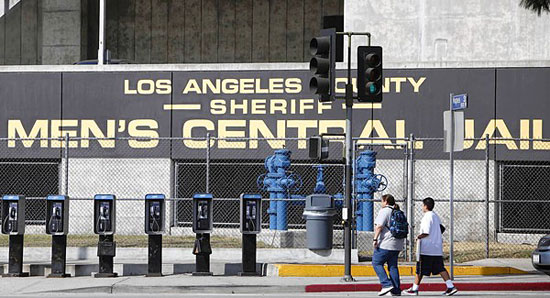Prescription for a new jail?
May 22, 2013

Assistant Sheriff Terri McDonald says that addressing custody issues for mentally ill inmates is a top initiative.
Los Angeles County’s jail system has, in the words of Sheriff Lee Baca, become the nation’s largest de facto mental hospital. Thousands of inmates who need intensive treatment are posing huge medical, logistical and financial challenges inside and outside the lockup. The buildings that house nearly 19,000 inmates simply weren’t designed to cope with the realities of today’s inmate population in Los Angeles.
And no one is more aware of the problems looming on the edge of downtown than Assistant Sheriff Terri McDonald, who was recently hired as part of the sweeping reforms a blue-ribbon commission recommended to curb deputy brutality against inmates.
“It’s one of my top initiatives,” McDonald said of finding a way to house and treat mentally ill offenders. “It’s a complex social and criminal justice issue. If they’re going to be jailed, then it’s in the best interest of the county to design a jail that best meets their therapeutic needs.”
On Tuesday, the Board of Supervisors unanimously agreed with that assessment, taking the first steps in what could lead to the construction of an Integrated Inmate Treatment Center, which would house all mentally ill inmates, including those with co-occurring substance abuse disorders, for specialized treatment.
“I am open as a policymaker and as a taxpayer to doing something that costs money if it stands a chance of actually producing results and…not just warehousing people,” said Supervisor Zev Yaroslavsky, who authored the motion calling for an analysis of a stand-alone facility.
Yaroslavsky said it makes no sense to raze the archaic Men’s Central Jail downtown and build a proposed $1 billion replacement that essentially would serve the same function. “I just think that’s a colossal waste of money,” Yaroslavsky said. But construction of a separate facility to create badly needed mental health beds and treatment space would be “a game changer,” the supervisor said.
The board directed Vanir Construction Management, a county consultant already studying plans to replace Men’s Central Jail, to undertake a separate analysis of the mental health facility concept in conjunction with the Sheriff’s Department and the county’s health agencies.
Currently, according to McDonald, 2,500 inmates require mental health services. The number of intensive mental health treatment beds, she said, represents a quarter of what’s needed. What’s more, she said there’s a severe shortage of group treatment spaces to explore such issues with inmates as anger management, medication compliance and hygiene—“places to talk about their ability to be successful.”
Yaroslavsky and McDonald said the broader public would benefit, too. Studies show that recidivism drops among mentally ill/dually diagnosed inmates who receive intensive treatment. A separate facility would also open up more beds for the general inmate population; mentally ill inmates now are often placed alone in two-bunk cells, McDonald said.
What’s more, with the federal justice department monitoring the county’s management of mentally ill inmates—and the ever-present potential for lawsuits—the construction of a new facility would further demonstrate the county’s commitment to improving conditions for this growing and difficult population.
Earlier this year, a Sheriff’s Department study found that jailers were more likely to use force against mentally ill patients, who can be more disruptive and less compliant, requiring staff with more specialized training to avoid conflicts.
“Mentally ill inmates have a much more difficult time adjusting to a jail environment,” McDonald said. “They sometimes get paranoid and attack the staff or each other.”
By all accounts, the completion of a new downtown facility could be years away. So for now, McDonald said, she’s trying to come up with a “temporary solution” by reconfiguring existing space to free up more mental health beds and treatment areas.
“We’ve got to do something here,” she said. “Our mentally ill offenders need more out-of-cell treatment time and we need additional bed capacity.”

If approved, the Integrated Inmate Treatment Center would be built on the site of Men's Central Jail.
Posted 5/22/13












 405 bridge work causes a stink
405 bridge work causes a stink
